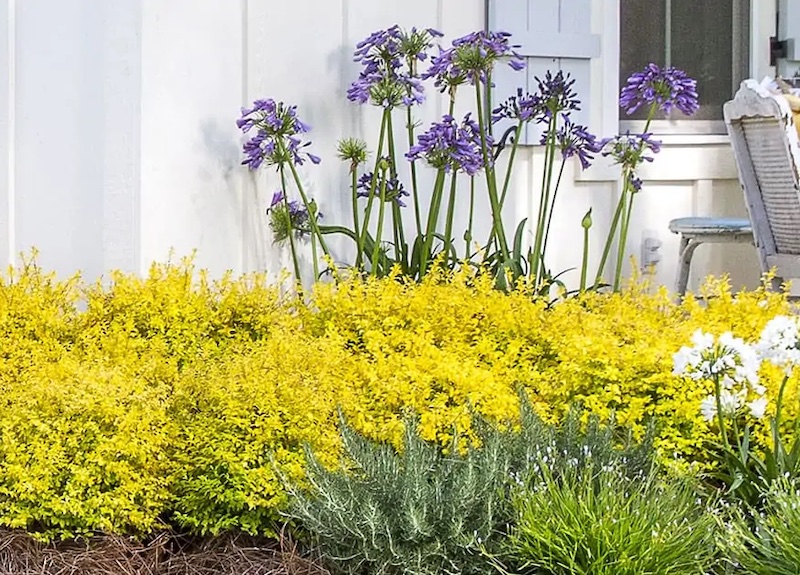Expanding Agapanthus: A Total Guide to Beautiful Blooms
Expanding Agapanthus: A Total Guide to Beautiful Blooms
Blog Article
Letting Loose the Secret to Effective Agapanthus Farming: Idea for a Flourishing Yard
In the world of horticulture, growing agapanthus effectively needs a critical technique that includes different facets of plant treatment. By understanding the subtleties of agapanthus growing, one can produce an environment where these plants thrive and grow generously.
Growing Agapanthus: Best Practices
When growing Agapanthus, appropriate dirt prep work is necessary for making certain successful development and growth of these attractive blossoms. Agapanthus, frequently known as Lily of the Nile or African lily, grows in well-draining soil with a somewhat acidic to neutral pH level - Agapanthus. Before planting, it is essential to amend hefty clay soils with natural matter such as compost or peat moss to enhance drain and provide vital nutrients for the plants
To plant Agapanthus, pick an area that obtains complete sunlight to partial color, as this will promote healthy and balanced development and plentiful blooming. Dig an opening twice the diameter of the plant's origin round and put the Agapanthus at the same depth it was formerly growing. Carefully backfill the hole with dirt, weighing down securely to eliminate any type of air pockets around the roots.
Water the newly planted Agapanthus completely and remain to keep the soil uniformly wet, particularly throughout the plant's energetic expanding season. Agapanthus. Applying a well balanced plant food once a month can further sustain the plant's development and blooming. By following these finest practices for growing Agapanthus, you can produce a sensational display screen of these exciting flowers in your garden
Suitable Soil Issues for Agapanthus
For ideal development and growing success of Agapanthus plants, ensuring the dirt conditions are optimal is important. Agapanthus likes soil that is abundant in nutrients, so including a well balanced fertilizer during the growing period can advertise healthy growth and vivid blossoms.

Watering and Feeding Tips
To guarantee healthy and balanced development and lively flowers, appropriate watering and fertilizing strategies are necessary for effective Agapanthus cultivation. Agapanthus plants profit from normal watering, especially throughout the growing season.
When it pertains to fertilizing Agapanthus, a balanced plant food with equal components nitrogen, phosphorus, and potassium can be applied in the spring to advertise healthy and balanced development and blooming. Slow-release fertilizers are excellent for providing nutrients progressively over a prolonged period. Stay this clear of over-fertilizing, as this can bring about too much foliage development at the expenditure of flowers.
In addition, incorporating raw material like garden compost into the dirt can boost nutrient levels and boost you can find out more soil framework, assisting in the total health of the Agapanthus plants. By adhering to these watering and feeding suggestions, garden enthusiasts can guarantee their Agapanthus plants flourish and produce spectacular screens of blossoms.
Trimming and Deadheading Techniques
Correct trimming and deadheading techniques play a vital duty in maintaining the health and wellness and aesthetic appeals of Agapanthus plants, complementing the essential methods of watering and fertilizing for successful growing. Pruning Agapanthus includes getting rid of invested blossom heads, yellowing or dead fallen leaves, and total shaping of the plant to advertise better growth. Deadheading, the procedure of getting rid of discolored blossoms, not only boosts the plant's appearance however likewise motivates more flowering.
When deadheading Agapanthus, it is suggested to clip off the flower stem at the base utilizing sharp, clean shears. This process redirects the plant's energy from seed manufacturing back into origin and foliage development, advertising a much healthier and extra robust plant. Normal deadheading can expand the flowering duration of Agapanthus and protect against self-seeding, which can lead to overcrowding.
In regards to trimming, Agapanthus normally take advantage of a light trim after blossoming to clean the plant and motivate fresh development. Reducing the invested flower stems and eliminating any kind of damaged or dead foliage assists keep the plant's vitality and general appearance. Nevertheless, it is important to stay clear of cutting right into the crown of the plant, as this can weaken its health.

Protecting Agapanthus From Vermins and Diseases
Executing reliable parasite and disease monitoring methods is vital to protecting the health and wellness and vitality of Agapanthus plants in farming. One usual insect that influences Agapanthus is the Agapanthus borer, a caterpillar that tunnels image source right into the plant, triggering damage to the leaves and flowers.
In addition to pests, Agapanthus are at risk to conditions such as origin rot and fungal fallen leave areas. By staying vigilant and addressing pest and disease issues promptly, gardeners can aid their Agapanthus prosper and grow.

Final Thought
To conclude, successful farming of agapanthus requires appropriate planting strategies, suitable dirt conditions, ample watering and feeding, routine trimming and deadheading, and defense from diseases and pests. By adhering to these tricks and ideas, gardeners can ensure a growing yard filled up with beautiful agapanthus blooms. Agapanthus. Bear in mind to maintain constant treatment and interest to information to promote the health and wellness and longevity of these magnificent plants
When growing Agapanthus, proper soil prep work is essential for making sure successful growth and advancement of these beautiful flowers.Water the newly grown Agapanthus thoroughly and continue to keep the dirt evenly damp, specifically throughout the plant's energetic expanding season.For ideal growth and flowering success of Agapanthus plants, guaranteeing the dirt problems are ideal is vital. When growing or transplanting Agapanthus, make sure the soil is well-prepared to supply the necessary structure for the plants to establish themselves efficiently. One common pest that influences Agapanthus is the Agapanthus borer, a caterpillar that passages right into the plant, creating damages to the fallen leaves and blossoms.
Report this page